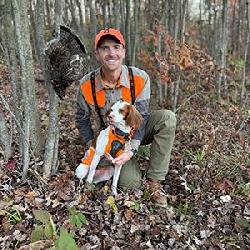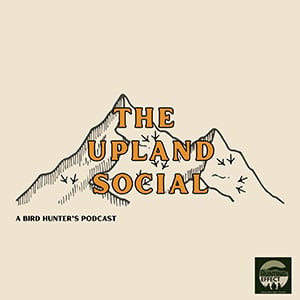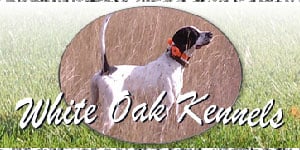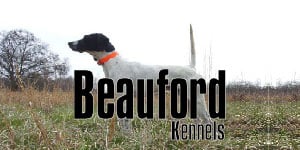See You At The Dance
Posted 03/24/2025
Arguably, the most coveted days on a bird hunter’s calendar are the ones where he or she is actually hunting. Those days are the summit of a year-long hike through the day-to-day of dog training, vet bills, hard earned paychecks, and sheer anticipation of what is to come. There are few things we would trade them for. But when seasons have come to a close and winter has laid the earth to a silent, seemingly lifeless rest, where does a bird-afflicted hunter turn to? What can be done to satiate the need for adventure that doesn’t end with the close of upland seasons?
Enter the spring migration of the American Woodcock. This ancient phenomenon feels synonymous with the changing of the seasons. As winter surrenders its icy grip to the blossoming of spring, the arrival of these birds in our backyards is almost symbolic. This unique time provides a fantastic opportunity to get outside, thaw the soul, get some dog work in, and witness the magic of migration.

The Journey
When hunters take to the northwoods, ruffed grouse and woodcock are usually lumped together in the same sentence as much as peanut butter and jelly. The birds are bunkmates, sharing similar habitats. But while the grouse is a homebody, the woodcock is transient, resembling the nomadic lifestyle of a military family that moves often. When autumn’s chill pervades the air in the birds’ summering grounds, they salute a farewell to the ruffed grouse as they begin their venerated journey south. Those that evade avian predation, collisions with skyscrapers (yes, that’s a thing), and shotgun patterns make it to their winter destinations.
These haunts are anywhere from Virginia, along the coast, all the way around to Texas. It’s here the birds find moist, unfrozen soil where they can probe their long bills into the ground, guzzling down earthworms. But as stated, these vagabonds merely rent this southern real estate. As the north country begins to soften to spring, woodcock begin the long flight back to their summer range, logging well over 1,000 miles round-trip. It is there the birds spend the warmer months, raise their young, and prepare for their fall migration once again. Telemetry has provided interesting data on migration patterns. Some tagged birds have been shown to fly considerably north, only then to shift left or right a few hundred miles. It’s still uncertain what elicits this peculiar behavior, which only adds to the fact these birds are still shrouded in mystery. Nonetheless, they eventually get where they are going. A journey consisting of hundreds upon hundreds of miles is no small task for the woodcock, making them the likes of top-tier endurance athletes. Such perseverance should be cause for great respect.

The Habitat
If you want to witness (and you should) the woodcock on their return flight north, locating quality habitat is critical. The birds preferred setting is that which provides early successional habitat. This looks different depending on where you live. It can come as a young forest, a brushy thicket, or a gnarly field edge. At any rate, the concept is still the same. Woodcock seek these areas out in conjunction with moist soil to stay concealed from predators all the while grubbing for worms. For their journey back north, however, there is an added criterion. In addition to early successional habitat, the birds need an adjacent opening to perform their courtship display, a highly animated presentation to be discussed in the next section. These areas can include open fields or a recent timber harvest.

Because they are habitat specialists (needing a very certain type), woodcock are very vulnerable to alterations in their environs. Land development and forest maturation forces birds to seek out new areas, putting a strain on the population. Issues like this create cause to join organizations such as the American Woodcock Society and Ruffed Grouse Society. These entities are dedicated to not only the propagation of their namesake birds, but overall forest health and diversity. Pheasants Forever and Quail Forever put habitat on the ground that benefits the woodcock as well. Our memberships to such organizations cannot be overstated.

The Dance
One clear sign you are in the right area is the visible data the birds leave. Woodcock
defecate broadly shaped droppings that are bright white in appearance. Mostly called “chalk” or “splashings”, it’s easily identifiable once learned. But the real-time confirmation you’re in the correct habitat is the audible confirmation the woodcock provides. At dawn and dusk, male birds emit their characteristic voicing, known as a “peent”. This zipper-tight, vibrative sound could easily be mistaken as coming from an insect rather than a bird. Just prior to the peent, the bird will also give a quick, bubbly phrase called a “tuko”. After a series of these sounds, he will catapult, fluttering up to three hundred feet above the ground. This upward flight begins what’s known as the “sky dance". Twittering all the way up, the lovesick male is doing all he can to attract a female. Upon reaching his highest point, he will begin his descent, uttering yet another fascinating sound somewhere between that of a kiss and a squeak. The bird will land near the same spot he launched from only to repeat the process again. Aldo Leopold, esteemed by many as a father in wildlife conservation, said it best in his highly regarded work, A Sand County Almanac:
Suddenly the peenting ceases and the bird flutters skyward in a series of wide spirals, emitting a musical twitter. Up and up, he goes, the spirals steeper and smaller, the twittering louder and louder, until the performer is only a speck in the sky. Then, without warning, he tumbles like a crippled plane, giving voice in a soft liquid warble that a March bluebird might envy. At a few feet from the ground, he levels off and returns to his peenting ground, usually to the exact spot where the performance began, and there resumes his peenting.
I have a local spot my wife and I like to frequent in the spring, routinely holding migrant birds. Last year, the final flicker of daylight presented quite a charismatic show of woodcock peenting and sky dancing around us. I have never hunted it in the fall, and I kind of like it that way. It’s hard to put into words, but the idea that keeps coming to mind is that the area is sacred. The deep delight this place has provided us, as we behold the persistence of these weary travelers makes it seem fitting to leave it alone come November.
A person would be hard-pressed to find a game bird that has a more mysterious and magnetic spring performance than that of the American Woodcock, rivaled maybe by the prairie chicken or sharp-tailed grouse. Their unconventional routine, bubbling with quirkiness and far-outness, goes hand in hand with how bizarre they are in appearance. And that is what makes them so special, among many things. The reasons to love and appreciate them are as numerous as the nicknames we’ve assigned them over the years. So shake off that winters lumber and find some spring woodcock habitat. Maybe I’ll see you at the dance.
Enter the spring migration of the American Woodcock. This ancient phenomenon feels synonymous with the changing of the seasons. As winter surrenders its icy grip to the blossoming of spring, the arrival of these birds in our backyards is almost symbolic. This unique time provides a fantastic opportunity to get outside, thaw the soul, get some dog work in, and witness the magic of migration.

The Journey
When hunters take to the northwoods, ruffed grouse and woodcock are usually lumped together in the same sentence as much as peanut butter and jelly. The birds are bunkmates, sharing similar habitats. But while the grouse is a homebody, the woodcock is transient, resembling the nomadic lifestyle of a military family that moves often. When autumn’s chill pervades the air in the birds’ summering grounds, they salute a farewell to the ruffed grouse as they begin their venerated journey south. Those that evade avian predation, collisions with skyscrapers (yes, that’s a thing), and shotgun patterns make it to their winter destinations.
These haunts are anywhere from Virginia, along the coast, all the way around to Texas. It’s here the birds find moist, unfrozen soil where they can probe their long bills into the ground, guzzling down earthworms. But as stated, these vagabonds merely rent this southern real estate. As the north country begins to soften to spring, woodcock begin the long flight back to their summer range, logging well over 1,000 miles round-trip. It is there the birds spend the warmer months, raise their young, and prepare for their fall migration once again. Telemetry has provided interesting data on migration patterns. Some tagged birds have been shown to fly considerably north, only then to shift left or right a few hundred miles. It’s still uncertain what elicits this peculiar behavior, which only adds to the fact these birds are still shrouded in mystery. Nonetheless, they eventually get where they are going. A journey consisting of hundreds upon hundreds of miles is no small task for the woodcock, making them the likes of top-tier endurance athletes. Such perseverance should be cause for great respect.

The Habitat
If you want to witness (and you should) the woodcock on their return flight north, locating quality habitat is critical. The birds preferred setting is that which provides early successional habitat. This looks different depending on where you live. It can come as a young forest, a brushy thicket, or a gnarly field edge. At any rate, the concept is still the same. Woodcock seek these areas out in conjunction with moist soil to stay concealed from predators all the while grubbing for worms. For their journey back north, however, there is an added criterion. In addition to early successional habitat, the birds need an adjacent opening to perform their courtship display, a highly animated presentation to be discussed in the next section. These areas can include open fields or a recent timber harvest.

Because they are habitat specialists (needing a very certain type), woodcock are very vulnerable to alterations in their environs. Land development and forest maturation forces birds to seek out new areas, putting a strain on the population. Issues like this create cause to join organizations such as the American Woodcock Society and Ruffed Grouse Society. These entities are dedicated to not only the propagation of their namesake birds, but overall forest health and diversity. Pheasants Forever and Quail Forever put habitat on the ground that benefits the woodcock as well. Our memberships to such organizations cannot be overstated.

The Dance
One clear sign you are in the right area is the visible data the birds leave. Woodcock
defecate broadly shaped droppings that are bright white in appearance. Mostly called “chalk” or “splashings”, it’s easily identifiable once learned. But the real-time confirmation you’re in the correct habitat is the audible confirmation the woodcock provides. At dawn and dusk, male birds emit their characteristic voicing, known as a “peent”. This zipper-tight, vibrative sound could easily be mistaken as coming from an insect rather than a bird. Just prior to the peent, the bird will also give a quick, bubbly phrase called a “tuko”. After a series of these sounds, he will catapult, fluttering up to three hundred feet above the ground. This upward flight begins what’s known as the “sky dance". Twittering all the way up, the lovesick male is doing all he can to attract a female. Upon reaching his highest point, he will begin his descent, uttering yet another fascinating sound somewhere between that of a kiss and a squeak. The bird will land near the same spot he launched from only to repeat the process again. Aldo Leopold, esteemed by many as a father in wildlife conservation, said it best in his highly regarded work, A Sand County Almanac:
Suddenly the peenting ceases and the bird flutters skyward in a series of wide spirals, emitting a musical twitter. Up and up, he goes, the spirals steeper and smaller, the twittering louder and louder, until the performer is only a speck in the sky. Then, without warning, he tumbles like a crippled plane, giving voice in a soft liquid warble that a March bluebird might envy. At a few feet from the ground, he levels off and returns to his peenting ground, usually to the exact spot where the performance began, and there resumes his peenting.
I have a local spot my wife and I like to frequent in the spring, routinely holding migrant birds. Last year, the final flicker of daylight presented quite a charismatic show of woodcock peenting and sky dancing around us. I have never hunted it in the fall, and I kind of like it that way. It’s hard to put into words, but the idea that keeps coming to mind is that the area is sacred. The deep delight this place has provided us, as we behold the persistence of these weary travelers makes it seem fitting to leave it alone come November.
A person would be hard-pressed to find a game bird that has a more mysterious and magnetic spring performance than that of the American Woodcock, rivaled maybe by the prairie chicken or sharp-tailed grouse. Their unconventional routine, bubbling with quirkiness and far-outness, goes hand in hand with how bizarre they are in appearance. And that is what makes them so special, among many things. The reasons to love and appreciate them are as numerous as the nicknames we’ve assigned them over the years. So shake off that winters lumber and find some spring woodcock habitat. Maybe I’ll see you at the dance.
Related Aritlces
Don’t Chicken Out Of Hunting Chickens
“Flump! Flump! Flump!” sent soundwaves tingling through my ears, followed by the crack






















